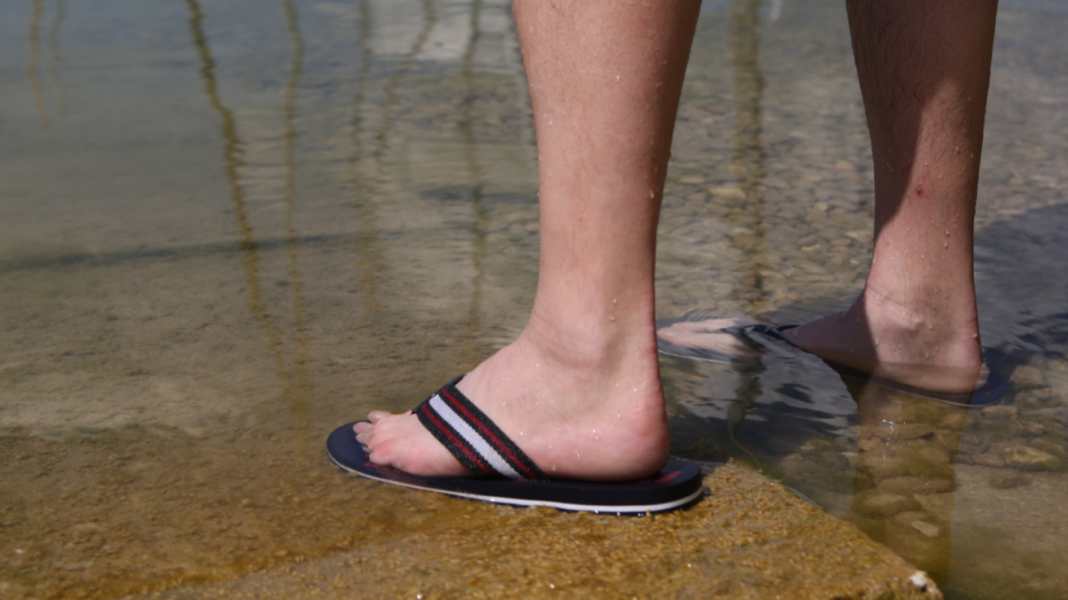
The State Office for Health and Social Affairs (Lagus) in Mecklenburg-Western Pomerania has first Vibrio infection of this year's bathing season. A 68-year-old local man became infected with the saltwater bacteria and died despite treatment in hospital. How exactly the man came into contact with the vibrios has not been conclusively clarified, the Lagus announced. The deceased suffered from previous illnesses.
According to Lagus, a total of 95 infections have been reported since 2003, 14 people have died, 13 of whom had previous illnesses. Last year, YACHT had already reported on Vibrio deaths reported.
However, vibrio infections currently pose a very low risk to healthy people. Compared to the most common causes of death, such as cardiovascular diseases and cancer, as well as road accidents and suicides, the risk from vibrios is negligible.
However, the overall low risk is currently increasing, which is linked to the proliferation of blue-green algae. If these occur more frequently, like right nowIf the water is too wet, more vibrios can be expected shortly afterwards, as these feed on dying blue-green algae.
However, there is no need to panic, but we would like to explain the risks below:
Bacteria detected in all samples
According to Lagus, vibrios have been detected in samples along the entire Baltic Sea coast between Schleswig-Holstein and Mecklenburg-Western Pomerania, including the Bodden waters and Poland. By the end of the season, a bacterial load must be expected in the entire Baltic Sea and the Bodden areas. The bacteria multiply particularly well at water temperatures above 20 degrees and in waters with a medium salt content. Both of these factors apply to the Baltic Sea, where the water temperature has been continuously increased is.
Why vibrios are dangerous
Vibrions can enter the human body in various ways. The most common route is via skin injuries. Even a bloody mosquito bite can serve as an entry point. If you bathe with a wound, the bacteria can penetrate and cause an infection. This can destroy skin, muscles and tissue and very quickly lead to life-threatening blood poisoning (septicaemia). In severe cases, this can lead to amputation of the affected limbs. In the further course of the disease, internal organs may be affected, which is accompanied by the formation of centres of pus in the body and, in the worst case, can be fatal.
Vibrio viruses, which cause gastrointestinal diseases, are transmitted orally. They enter the body via the mouth, usually through contaminated drinking water and food. Eating raw or undercooked seafood (e.g. oysters, mussels) or fish from contaminated waters can also lead to infection.
Typical risk groups include the elderly and immunocompromised people. People with pre-existing conditions such as diabetes mellitus, liver disease (e.g. liver cirrhosis, chronic hepatitis), cancer and severe heart disease have an increased risk of contracting the disease and also of a severe course of the disease.
Symptoms and prevention
One noticeable symptom of an infection is unusually severe pain, even with minor injuries. Symptoms of a vibrio infection can also include redness, swelling and blistering on the skin, combined with fever, chills, vomiting and diarrhoea, and even shock. In such cases, a doctor should be consulted immediately. If recognised early, a vibrio infection can usually be treated well with antibiotics.
The consumption of contaminated food causes severe abdominal pain and severe diarrhoea after around 16 hours. If left untreated, blood poisoning can occur shortly afterwards, which in the worst case can cause septic shock and multiple organ failure.
As a preventative measure, you should enquire about the water temperature on site every day, taking particular care above 20 degrees. You can also find out about the water quality before swimming. On the Website of the Federal Environment Agency you will find links to the bathing waters and current water quality data of the individual federal states.
Wearing bathing shoes can prevent injuries, even the smallest abrasions, corns or blisters on the feet offer a target.
You should shower off after swimming. If you want to be on the safe side, you can use a disinfectant solution after spending time in water potentially affected by vibrios. People with skin injuries or chronic illnesses should generally stay away from bodies of water in which vibrios have been detected.
Minor wounds should be treated carefully and observed. Scratches, cuts or abrasions should be thoroughly cleaned, disinfected and covered with a plaster. If the wound is healing normally, the pain, redness and swelling should subside. The wound should be dry after a few days at the latest.
Vibrio early warning system
Scientists at the Leibniz Institute for Baltic Sea Research Warnemünde are working on a Early warning system for vibrios in the Baltic Sea. Using drone technology and artificial intelligence, the aim is to detect elevated levels of bacteria at an early stage. To this end, water samples were regularly taken and analysed at 15 locations between Rostock and Heiligendamm for over a year. The results should help to better predict the occurrence of dangerous bacteria. To this end, the occurrence of blue-green algae is analysed using their spectral colours. If these occur in greater numbers, more vibrios can be expected shortly afterwards. A test run of the system is planned for summer 2026.

